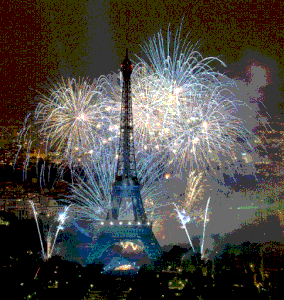What do Modern Historians think about the Storming of the Bastille?
This is what has happened during the fall of the Bastille during the French Revolution, which was the 14th July 1789. Modern historians think that the storming of the Bastille was due to obtain power in the General Estates and to rebel against the king’s excess of spending money. For example, the royal family had spent a lot of money for clothes, for Versailles, for the army, for the war against England and to finance the Independent War in America. France in that period was poor and had to pay a lot of money, including taxes. During the storming of the Bastille, the population freed some of the politicians that were caught and sent into the prison of the Bastille. Now days, the historians think that the fall of the Bastille was a symbol of rebellion against the king’s power and an important symbolic event of the French Revolution.
The Paris Newspaper says that all the Parisian people were revolting and were stealing all the furniture and weapons to destroy the Bastille. More than 10000 people were involved, including the farmers and the prisoners. The crowd was surging towards the Bastille killed and tortured the king’s troop. As Charles Dickens, a famous writer wrote that on the June 27th 1789, it looked that the king had finally given up, but it was not. Soon, he attacked Paris without telling anything. He wanted take control in Paris. In fact, he killed many revolts that were against him. Many people died.
The second view of point was Charles Dickens who wrote that although the storming of the Bastille was the begin of the French Revolution, all the French people were not really prepared for this attack. Moreover, the revolt was not a courageous act of patriotism. They did that because they were against the king Louis XVI and Marie-Antoinette’s power, which was hated by every single person in France.


The third view of point was a Governor called Bernard-Rene de Launay. He said that nearly around 1000 people were gathered around the Bastille and were shouting to surrender. However, the king’s army did not obey them. Therefore, they shot to the prison with cannons and guns. About ninety-eight attackers and one defender were killed.
The war started in the morning at 11 o’clock a.m. and had finished at around 5.30 p.m. due to the order of surrender of the Governor Launay. Without him, many revolts and soldiers would have died.
This day is mainly dedicated for the storming of the Bastille, which is the symbol of defeating the king’s power. This special day, the 14th of July of every year is holiday to all the French people. In this ceremony, the French Military Parades march under the Arch of Victory during the morning.
 1789. While the medieval fortress and prison known as the Bastille contained only seven prisoners, its fall was the flashpoint of the French Revolution and it therefore become an icon of the French Republic. In France, Le quatorze juillet (14 July) is a public holiday, known as the Fète de la Fèderation (Federation Holiday). It is usually called Bastille Day in English.
1789. While the medieval fortress and prison known as the Bastille contained only seven prisoners, its fall was the flashpoint of the French Revolution and it therefore become an icon of the French Republic. In France, Le quatorze juillet (14 July) is a public holiday, known as the Fète de la Fèderation (Federation Holiday). It is usually called Bastille Day in English.



